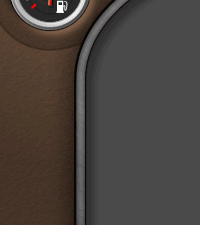Few people think about their vehicle's wiper blades, until
they're caught in a downpour or snowstorm. Generally, blades should
be changed every six months to eliminate these common problems
-
Cracked or split rubber
- usually caused by ultraviolet rays or overly aggressive
ice removal
Pitted. scarred or discoloured rubber
- usually caused by salt removing chemicals
Tom rubber
- where the rubber blade has pulled away from the arm and is slipping
out or slapping against the glass
Worn rubber
- old blades will exhibit rounded or ragged edges, which will
not clean properly
Windshield streaking
- can result from tree sap or road tar on the blades,
from cracked, inflexible rubber or from blades clogged with snow
or ice.
So how do you get the beet performance from your
blades?
Clean off the whole windshield - don't try to am out a Porthole.
Gently remove ice from around the wiper blade and make sure the
arm can move freely. Clean the snow off your hood and roof. Until
your vehicle comes up to operating temperature the ability to
melt that snow on the windshield is limited, and it will likely
just smear.
Have you ever had the experience of driving away with a clear
view only to have the windshield fog over instantly? That's usually
the result of snow being drawn in through the defrost system.
This is less likely to happen if you dean out your air intake
on the hood.
The lowly wiper blade. Just a few simple steps can keep it
invisible, and help you keep your eyes on the road.
Fuel injectors are the parts in your engine that take gasoline
from your vehicle's fuel system and transfer it in precise amounts
to the cylinders where the gas is burned.
Like miniature garden hose nozzles, which can be set to spray
a specific pattern and amount of water. injectors spray fuel into
the cylinders in an exactly shaped pattern and in an exact amount
that gives your vehicle proper ignition and maximum power. The
shape of the injector's spray pattern and its volume - the amount
of fuel being sprayed at any given time - are absolutely
critical to your engine's performance. Contamination can cause
a slight change in the spray pattern or volume and that results
in your engine losing power.
So, what causes ditty injectors? Well, in most cases deposits
form over time in the chamber of the injector and on its tip.
The additives in the gasoline you burn usually cause these deposits.
Switching brands or to a higher octane rating won't help, all
gasoline sold in this country have these additives.
What happens is the contaminants aren't burned up inside the
cylinders? Instead, they begin to bake onto the first hot surface
they encounter - your fuel injectors. As these deposits build
up, they change the shape and volume of the injector's spray pattern.
Fuel injector deposits are a natural side effect of the combustion
process and there's nothing you can do to avoid them.
Gasoline additives, although marketed as a means to clean your
injectors actually are not terribly effective.
The ability of the solvents they contain to clean your injectors
are greatly reduced when mixed with gasoline. Even
detergent-grade gasolines are no, Suspected by some
oil companies of actually contributing to fuel injector contamination.
Often it's hard to tell when dirty injectors are robbing your
engine of power, because just as the deposits build up gradually,
the vehicle's power and performance decreases gradually.
Occasionally an injector can become seriously clogged or plugged.
This can cause hesitation, stumble and a sudden and noticeable
loss of power. These symptoms are most noticeable when your injectors
have to work the hardest - during warm-up or when you accelerate.
Hard starting and rough idling can also be indications that your
injectors need cleaning, or in extreme contamination, replacement
of one or two of the injectors.
To prevent major fuel injector problems, regular professional
cleaning is recommended. A good rule of thumb is every 1,500 -
2,000 gallons of gas burned - every 50,000 kilometres or so. Cleaned
regularly, fuel injectors should last for tens of thousands of
Kilometres of driving.
Every year a large majority of the vehicles on the road are
caught unprepared for the first ,blast of really cold weather.
Here is a quick 1 list of things to have checked before that first
nasty blast:
- Cooling System: If it hasn't been done in a while,
have your cooling system flushed ad put in fresh antifreeze.
And don't forget to have containers, belts, hoses, the pressure
caps and thermostat checked.
- Battery & Electrical System: If your battery is
more than a few years old, have it tested. Cold weather is hard
on batteries. Ensure connections are clean and tight. Corroded
or loose connections can give the symptoms of a weak or dead
battery.
- Engine: Faulty. wiring, worn spark plugs, a sticking
choke or emission control devices that need attention, can all
lead to hard starting. A diagnostic check-up of the engine can
be a good pre-winter investment.
- Oil and Fitter: Dirty oil can give you trouble, in
the winter. Don't forget to check the other fitters on your
vehicle, including fuel, air and transmission filters.
- Tires:. For every WC of temperature drop, your tire
pressure decreased by one pound. Tires which are. under-inflated
affect gas mileage, traction and tire wear. Check your tire pressure
regularly.
Regular maintenance should help keep your vehicle reliable
and safe for any weather driving.



